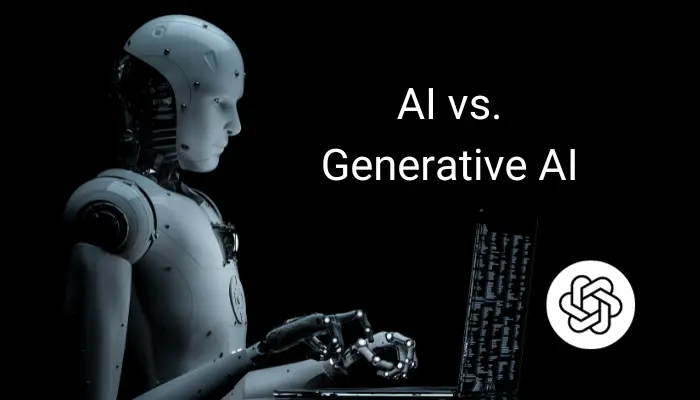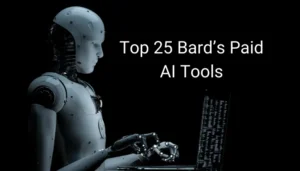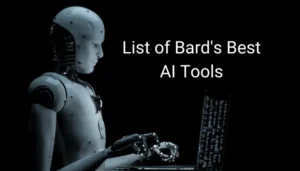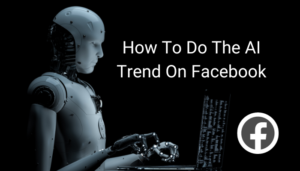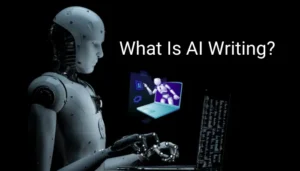In today’s tech-driven landscape, Artificial Intelligence (AI) has become a transformative force, influencing various facets of our lives. From powering virtual assistants to optimizing business processes, AI has made its mark. However, a new player has entered the scene – Generative AI. The comparison between “AI vs. Generative AI” is gaining prominence as these technologies continue to advance.
And in this dynamic environment, understanding their distinctions becomes crucial for grasping their respective roles and impacts.
This blog post explores the differences between traditional AI and Generative AI, including their capabilities, use cases, and potential impact on the future. The comparison of “AI vs. Generative AI” reveals the nuanced distinctions that separate these technologies, providing insight into their unique contributions to the expanding field of artificial intelligence.
What Is Generative AI vs. AI?
We’ll further clarify the distinctions in this section, “What Is Generative AI vs. AI?” In this segment, we’ll dissect Generative AI and traditional AI to unravel the intricacies of “AI vs. Generative AI.”
1. Generative AI
Generative AI is a subset of AI that focuses on generating new content autonomously. Unlike traditional AI, which often relies on pre-programmed rules, Generative AI exhibits a level of creativity and autonomy in producing content. This could include anything from generating text and images to creating music compositions. Notable examples of Generative AI include OpenAI’s GPT models, which can generate coherent and contextually relevant text based on the input provided.
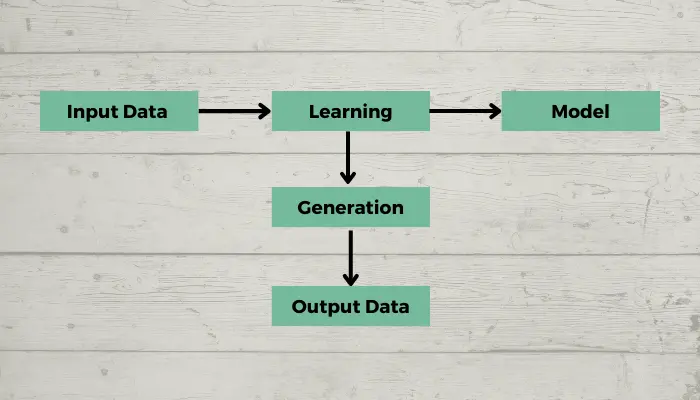
2. AI (Artificial Intelligence)
Artificial Intelligence, or AI, is the field that focuses on creating computer systems that can do tasks that usually need human intelligence. This field covers a range of systems, from simple rule-based ones to complex machine learning algorithms.
Key Characteristics of AI and Generative AI
| Characteristic | AI | Generative AI |
|---|---|---|
| Learning Approach | Supervised learning from labeled data | Unsupervised learning from unlabeled data |
| Autonomy | Task-specific within defined parameters | Creative autonomy in generating new content |
| Data Processing | Relies on structured data | Adaptable to unstructured data |
| Task Efficiency | Precise and efficient for specific tasks | Adaptable, excels in creative and diverse |
Key Differences Between AI and Generative AI
Let’s now delve deeper into the details of Artificial Intelligence (AI). By examining the distinctions between traditional AI and Generative AI, we can explore the complexities of this field.
1. What is the Difference Between AI and Generative AI?
The fundamental difference lies in the capacity to generate new content. Traditional AI is often task-specific, excelling in tasks it has been trained for, such as classifying images or translating languages. In contrast, Generative AI can autonomously create content without being explicitly programmed for a specific task.Read more about: Is ChatGPT Generative AI?
2. Data Processing Capabilities:
AI relies on structured data and follows predefined algorithms. Generative AI, however, can work with unstructured data, making it more adaptable to creative tasks like generating art or composing music.
3. Learning and Adaptation Mechanisms:
Traditional AI typically relies on supervised learning, where it learns from labeled data. Generative AI, on the other hand, often employs unsupervised learning, allowing it to learn patterns and structures from unlabeled data, fostering a more creative and adaptive approach. Read also: How to use AI at work?
4. Autonomy and Creativity in Generating Content:
While AI operates within defined parameters, Generative AI has a degree of autonomy, allowing it to produce content that goes beyond its initial training. This autonomy is what enables Generative AI to create realistic and contextually relevant content, whether it’s writing a story or composing a piece of music.

Use Cases: Where AI and Generative AI Excel
AI finds application in various sectors such as healthcare, finance, and manufacturing. For example, AI-powered diagnostic tools can analyze medical images to detect anomalies, enhancing the efficiency of healthcare professionals. In contrast, Generative AI shines in creative domains. Artists and writers use it to inspire new ideas, and it plays a role in the development of virtual worlds and characters in the gaming industry.
| Use Case | AI | Generative AI |
|---|---|---|
| Healthcare Diagnosis | Analyzing medical images for anomalies | Assisting in creative tasks like generating art |
| Finance | Data analysis and fraud detection | Creating innovative solutions or financial models |
| Manufacturing | Process optimization and automation | Designing new product concepts or prototypes |
| Content Creation | Copywriting and social media automation | Generating original content, like stories or music |
Advantages and Limitations
Let’s explore the distinct advantages and limitations that set traditional AI and its creative counterpart, Generative AI, apart.
Advantages of Traditional AI:
Traditional AI excels in tasks that require precision and efficiency. Its rule-based approach ensures accuracy in specific domains, such as data analysis and problem-solving.
Advantages of Generative AI:
Generative AI introduces a level of creativity and adaptability. It can produce novel content, making it valuable in scenarios where innovation and originality are paramount.
Limitations:
Traditional AI may struggle with tasks outside its predefined scope. For instance, an image recognition AI may falter if presented with a scenario it hasn’t been trained for. Generative AI, while creative, may sometimes produce content that lacks coherence or relevance.
Generative AI vs. AI: Which is Right for Your Needs?
When deciding between Generative AI and traditional AI, it’s crucial to consider your specific requirements. If you need a tool for data analysis, process optimization, or specific task automation, traditional AI may be the preferred choice. On the other hand, if your goal involves creativity, content generation, or innovative problem-solving, Generative AI might be a more suitable option.
The Future of AI and Generative AI
The future promises continued advancements in both AI and Generative AI. Traditional AI will likely become more specialized and efficient in task-oriented applications, while Generative AI may evolve to produce even more sophisticated and contextually aware content. As these technologies progress, ethical considerations regarding their use and impact will play a pivotal role in shaping their future. Read more: Generative AI vs predictive AI.
Conclusion:
In the realm of “AI vs. Generative AI,” each has its unique strengths and applications. AI, with its task-specific precision, is indispensable in various industries, ensuring efficiency and optimization. Generative AI brings a fresh perspective by being creative and adaptable, which means it can make new and inventive content.
Have you used AI or Generative AI in your projects? Join the conversation on social media to stay updated on the latest trends in AI.

